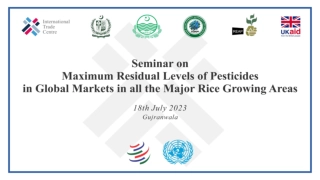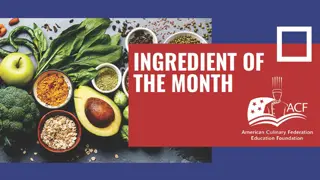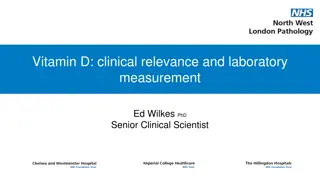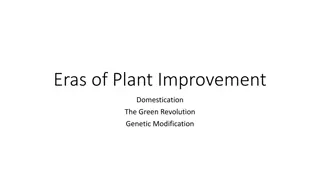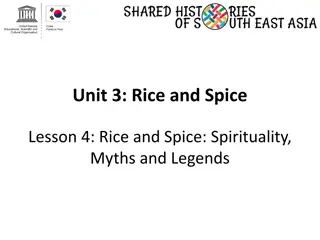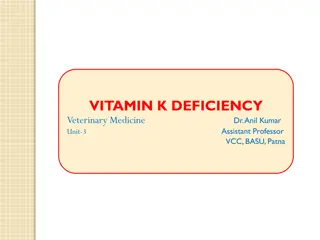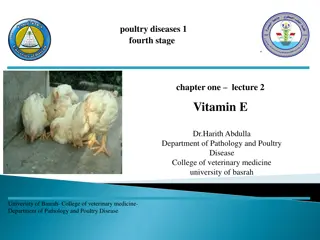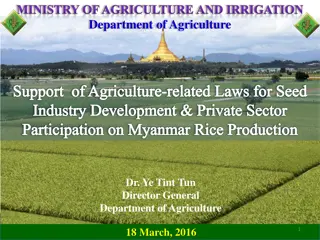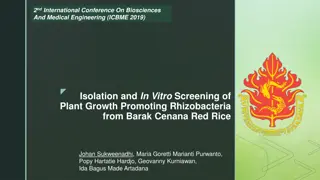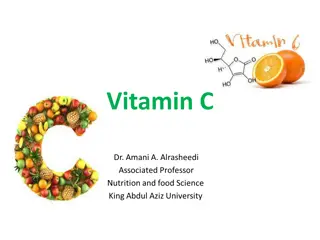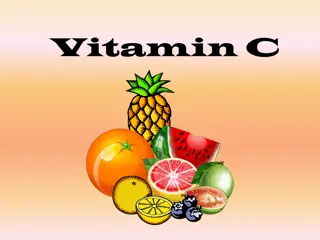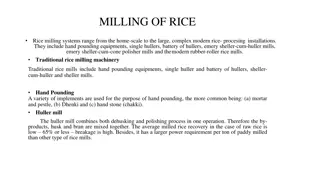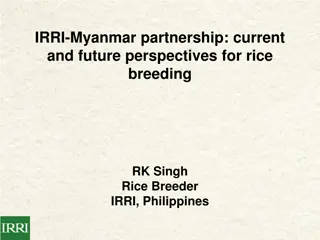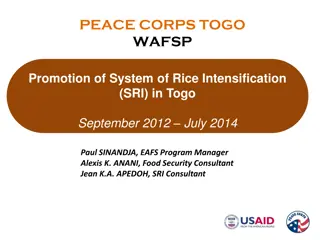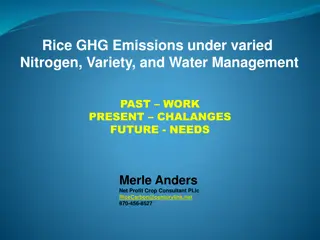Golden Rice: Addressing Vitamin A Deficiency Through Genetic Modification
Golden Rice is a genetically modified variety engineered to combat vitamin A deficiency, a critical health issue especially prevalent in regions where rice is a staple food. With increased levels of beta-carotene, this innovative solution offers improved nutritional security and the potential to prevent vision problems and blindness. Representing a successful collaboration between sectors, Golden Rice signifies a significant advancement in agricultural biotechnology.
Download Presentation

Please find below an Image/Link to download the presentation.
The content on the website is provided AS IS for your information and personal use only. It may not be sold, licensed, or shared on other websites without obtaining consent from the author.If you encounter any issues during the download, it is possible that the publisher has removed the file from their server.
You are allowed to download the files provided on this website for personal or commercial use, subject to the condition that they are used lawfully. All files are the property of their respective owners.
The content on the website is provided AS IS for your information and personal use only. It may not be sold, licensed, or shared on other websites without obtaining consent from the author.
E N D
Presentation Transcript
Golden Rice by Subamita Das
Introduction Golden Rice is a genetically modified (GM) variety of rice that has been engineered to contain higher levels of beta-carotene, a precursor of vitamin A. It was developed in the late 1990s with the aim of addressing vitamin A deficiency, a serious health issue affecting millions of people, particularly in developing countries where rice is a staple food. Vitamin A deficiency can lead to impaired immune function, vision problems, and even blindness, especially in children and pregnant women. Golden Rice represents a significant advancement in agricultural biotechnology, offering a potential solution to combat this widespread nutritional problem.
Importance 1.Addresses vitamin A deficiency, a critical public health issue. 2.Improves nutritional security in regions where rice is a staple food. 3.Culturally acceptable and sustainable solution for communities. 4.Potential to combat childhood blindness caused by vitamin A deficiency. 5.Represents a successful collaboration between public and private sectors.


